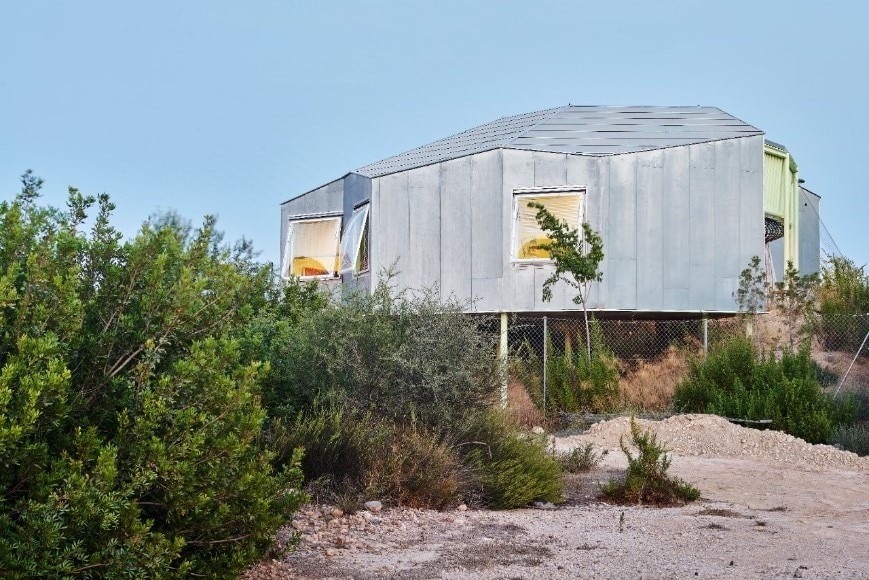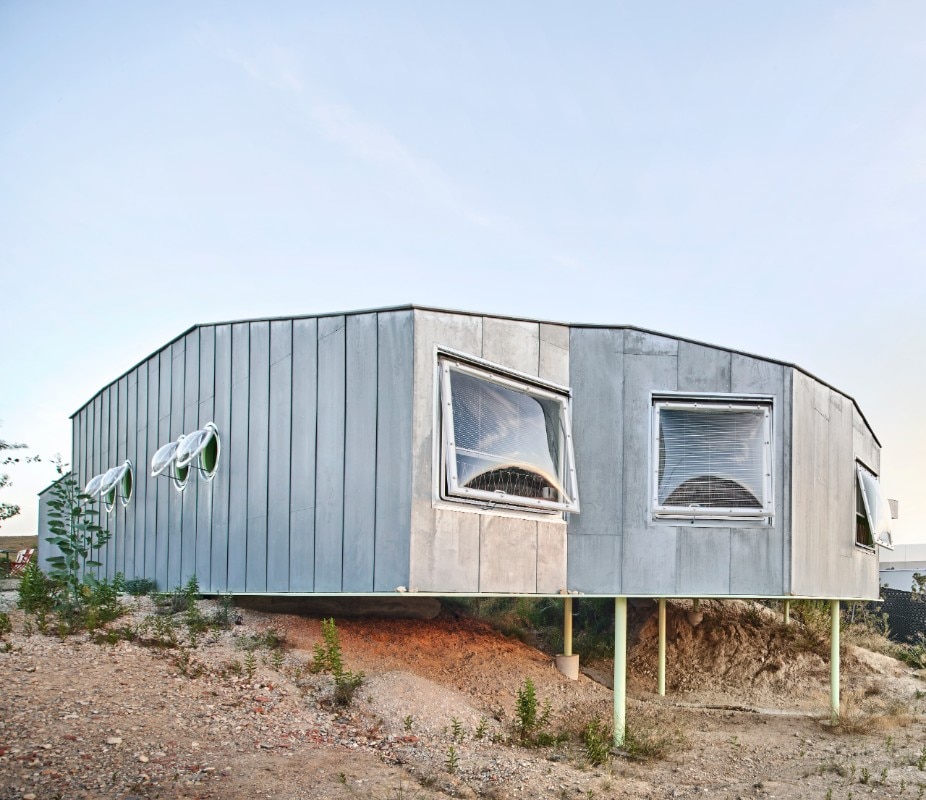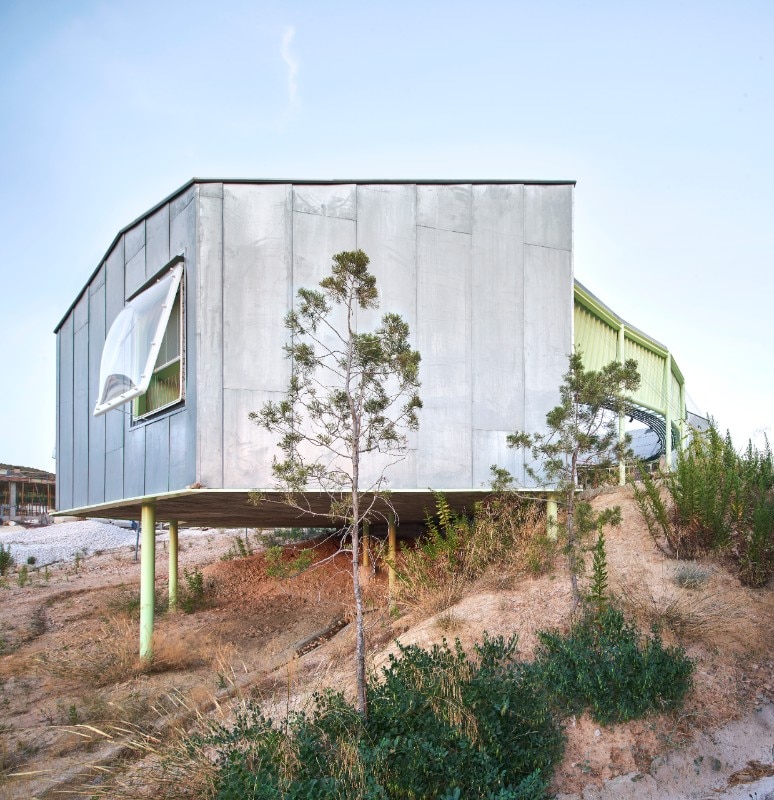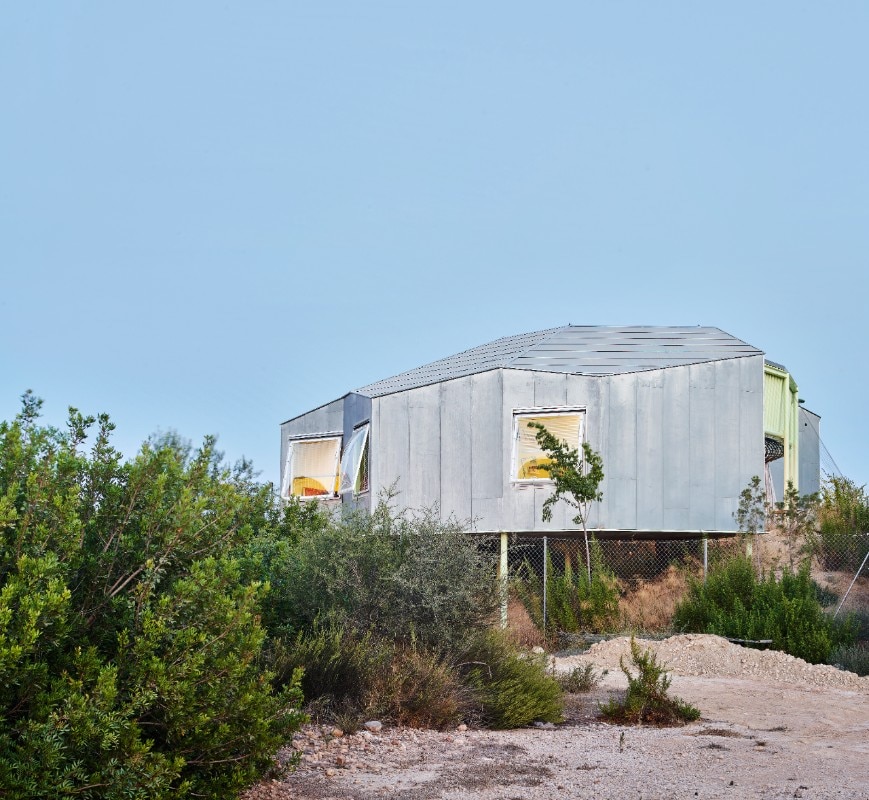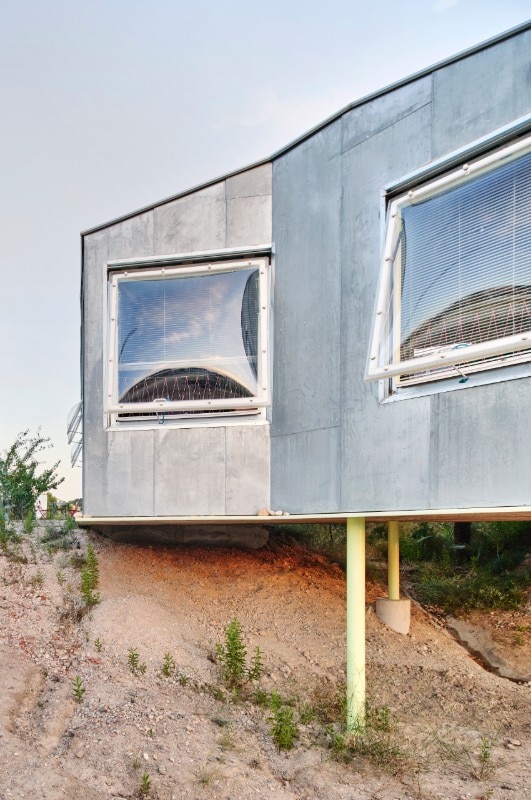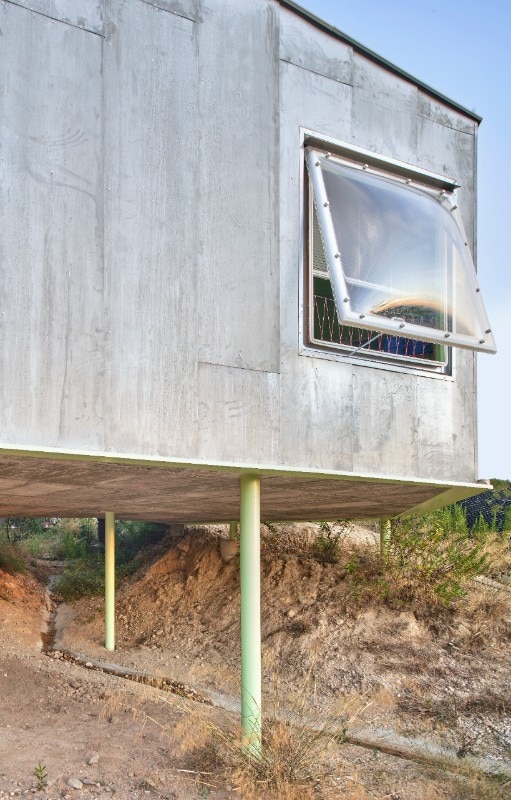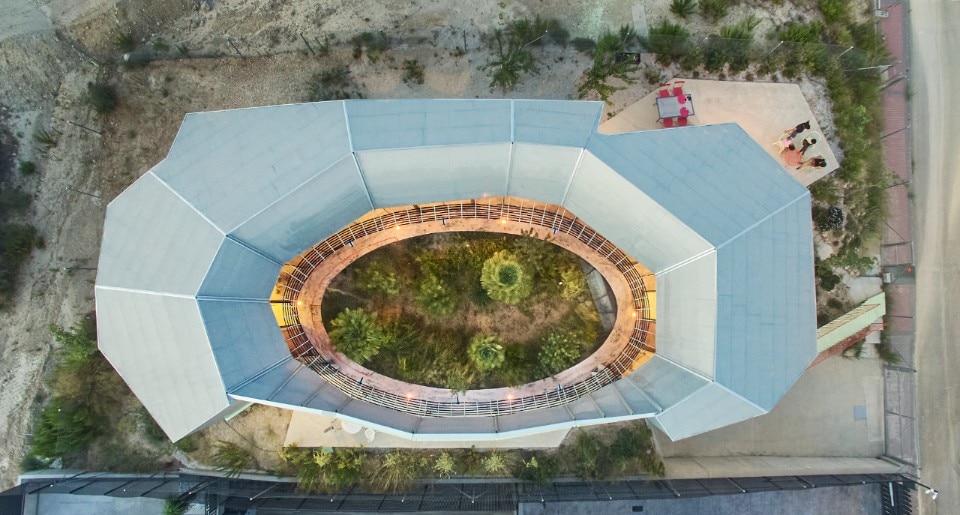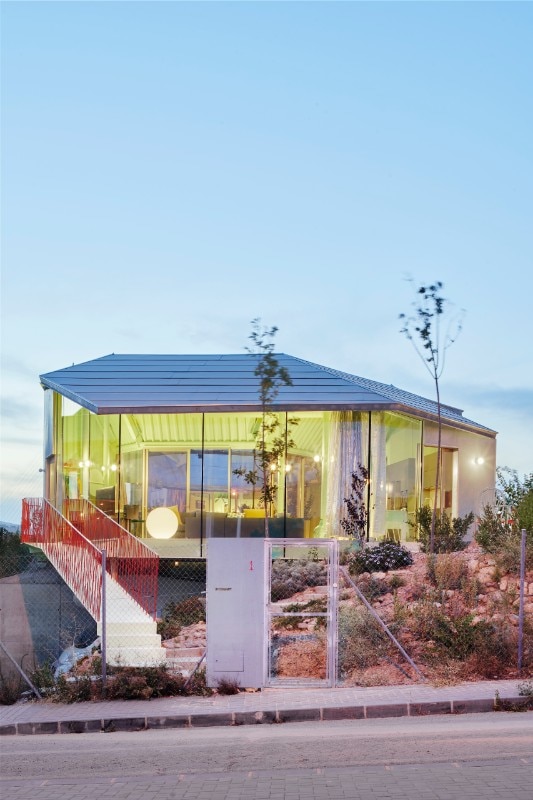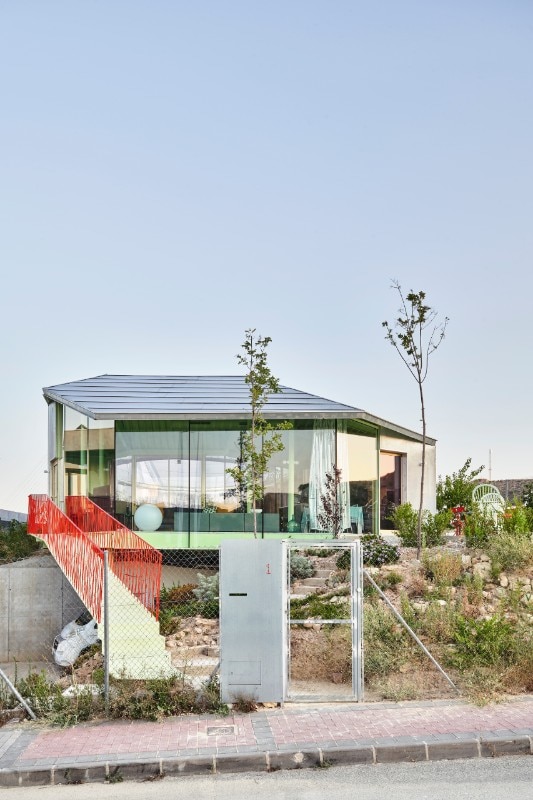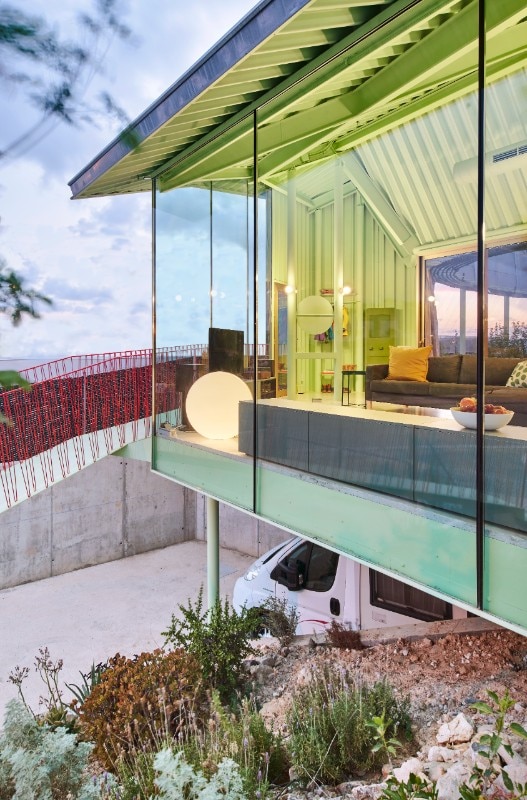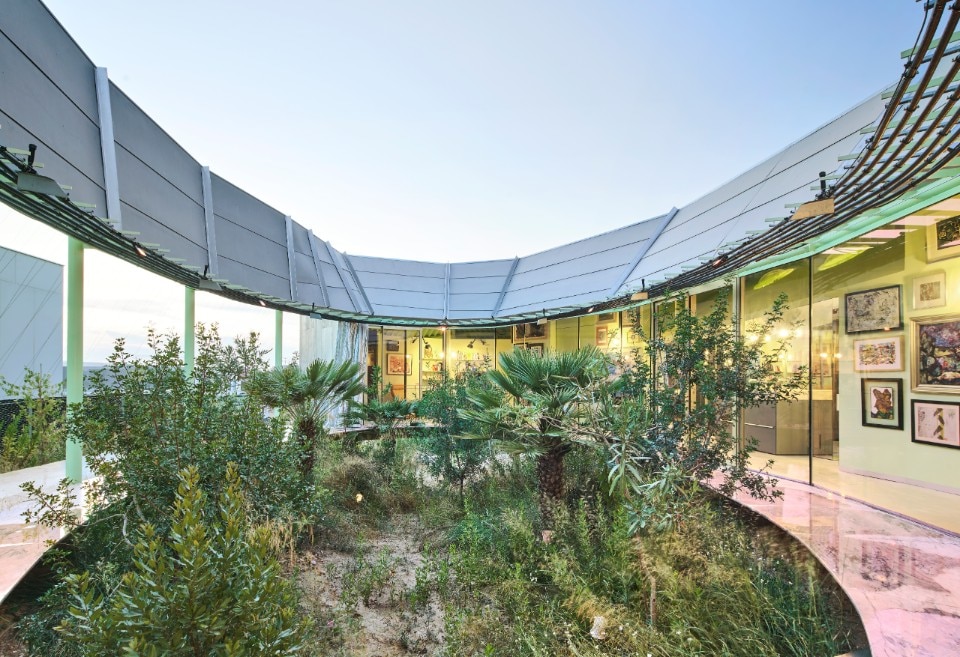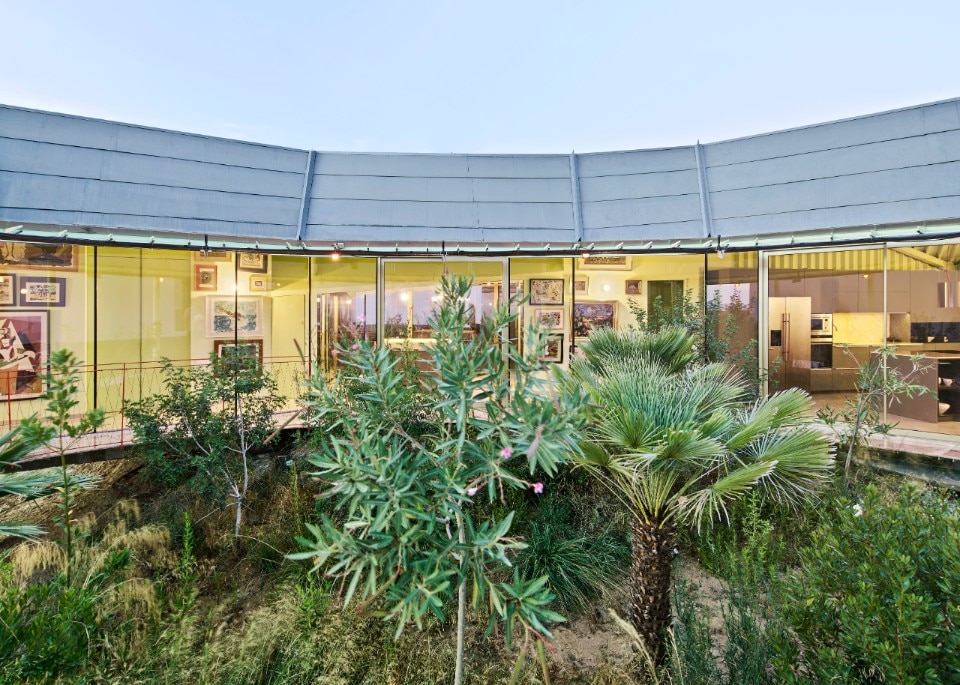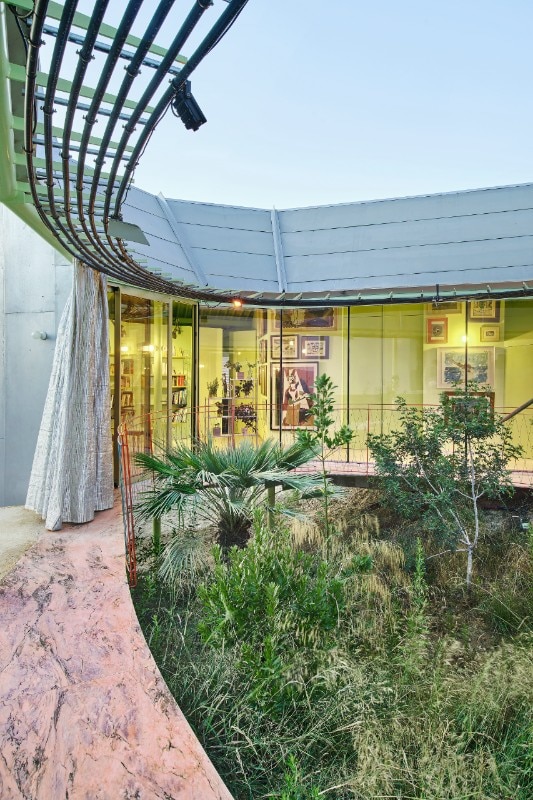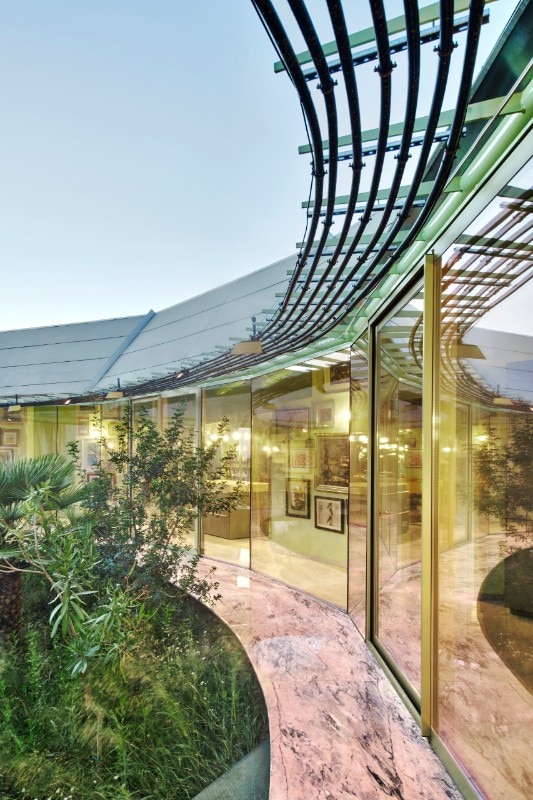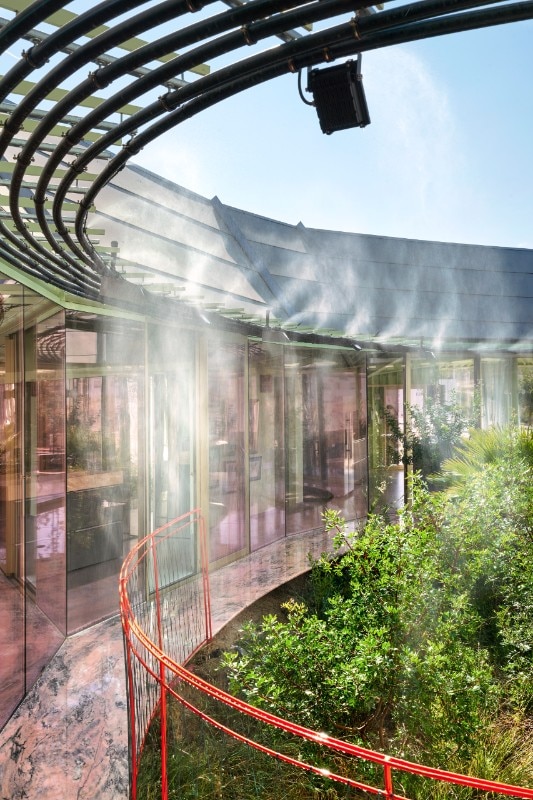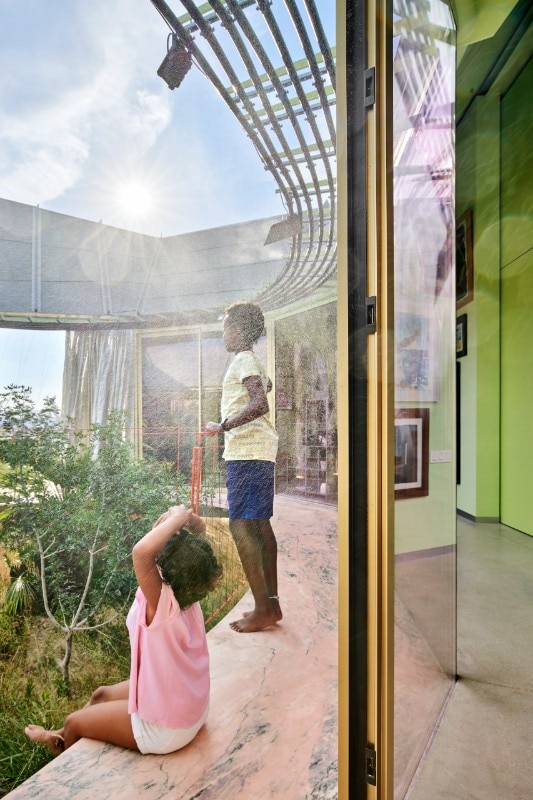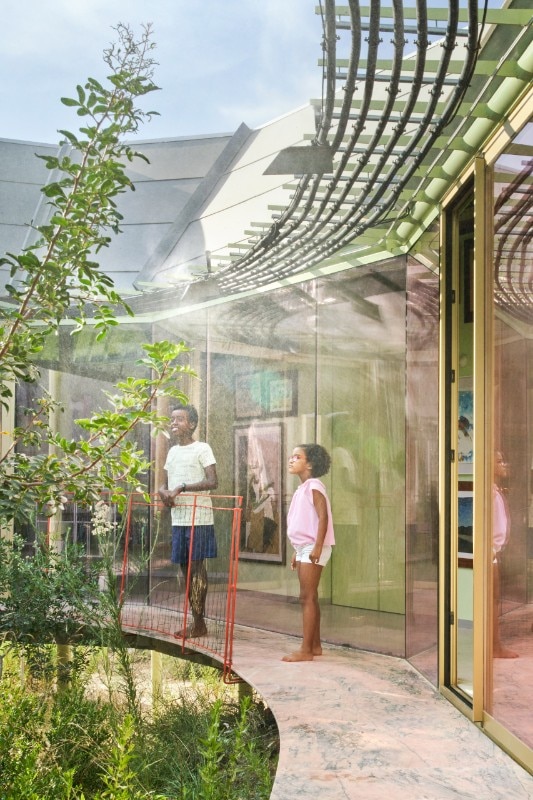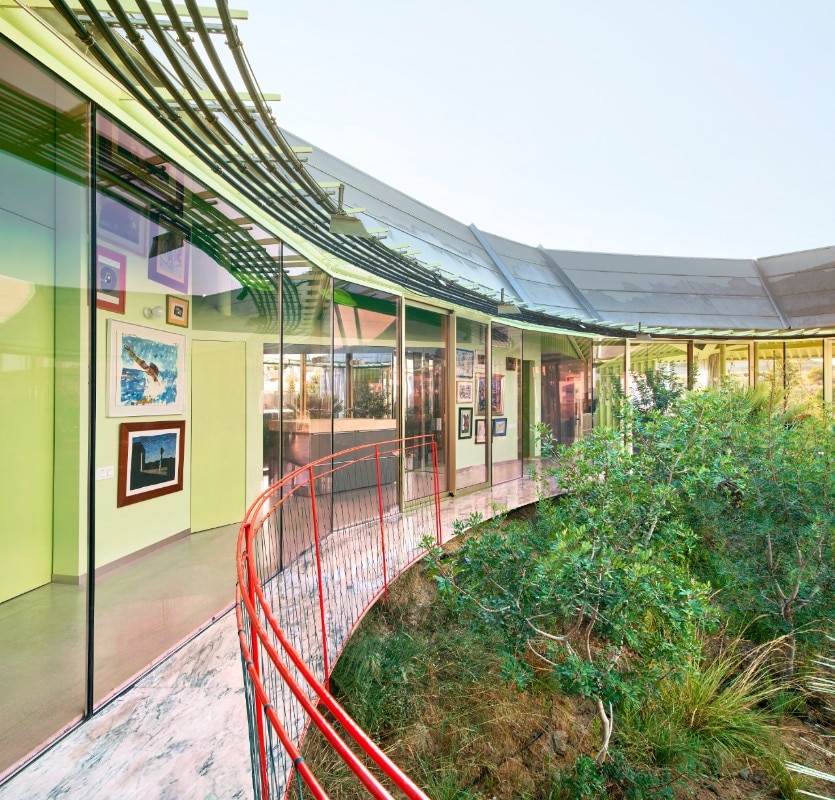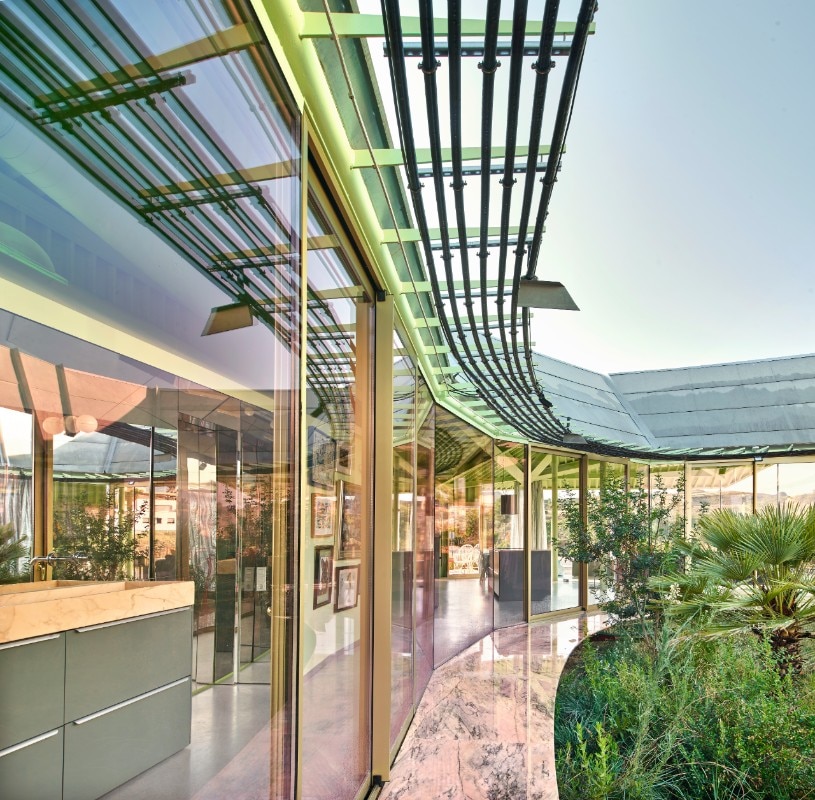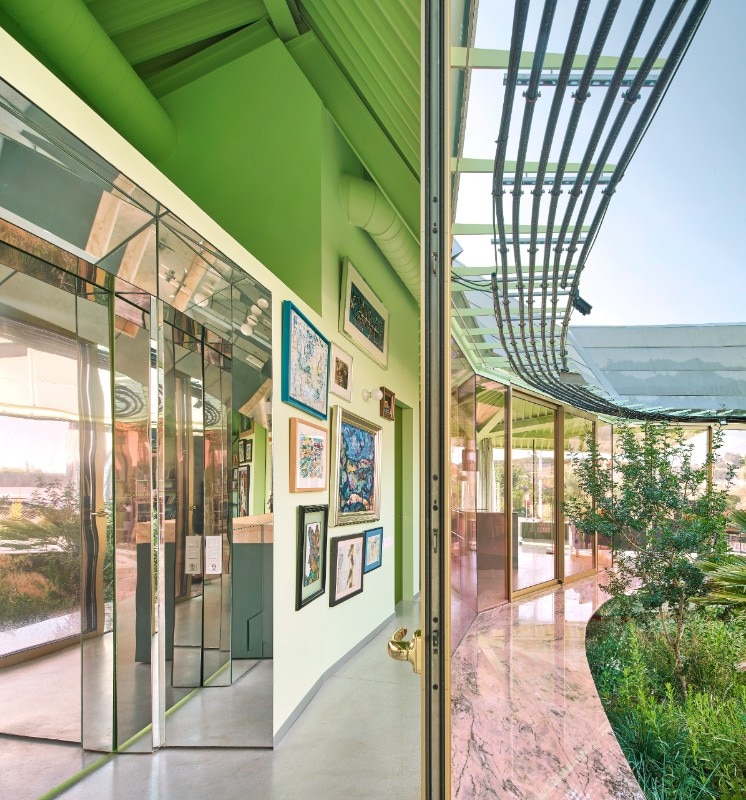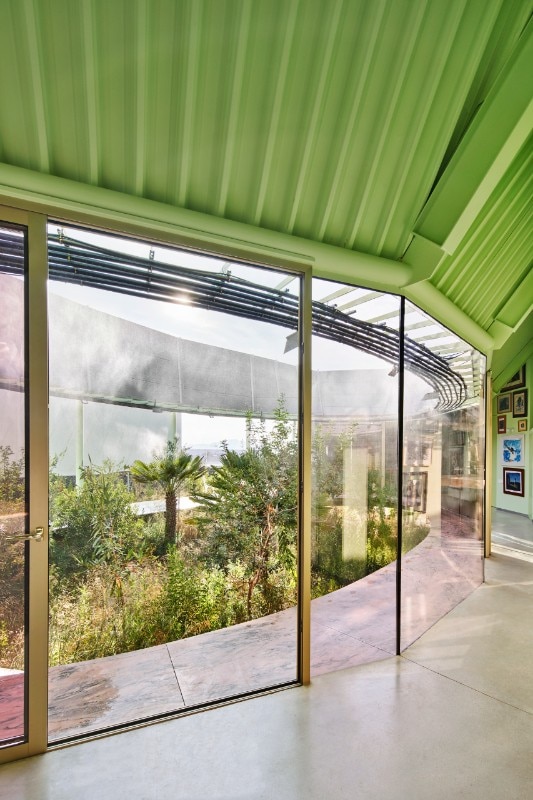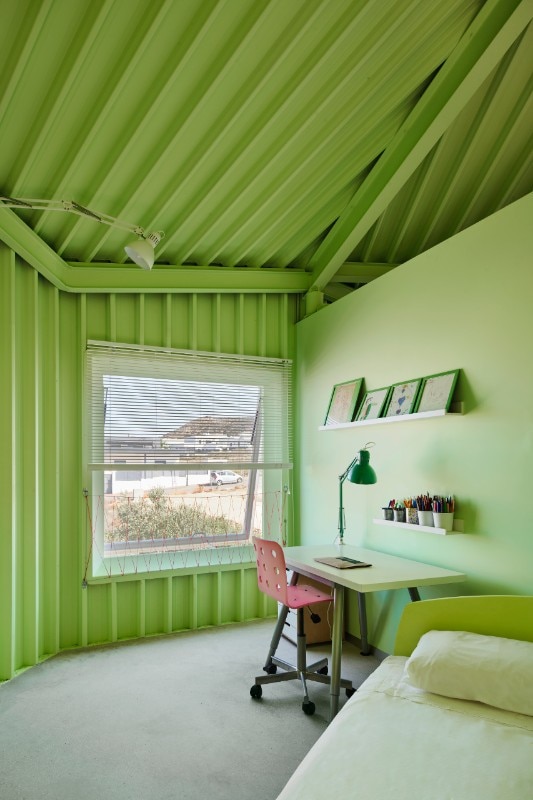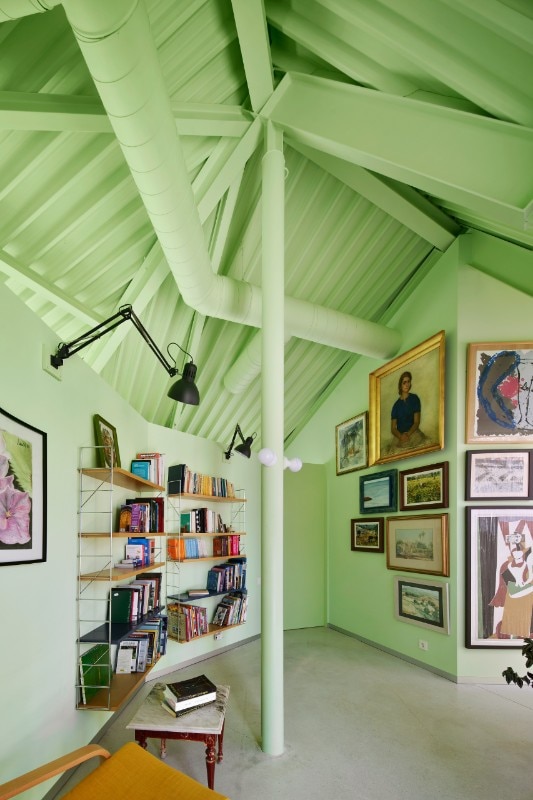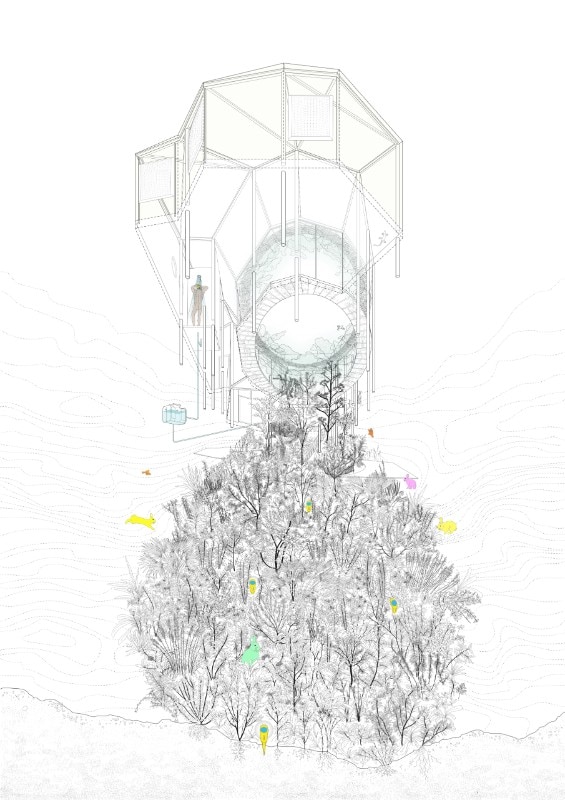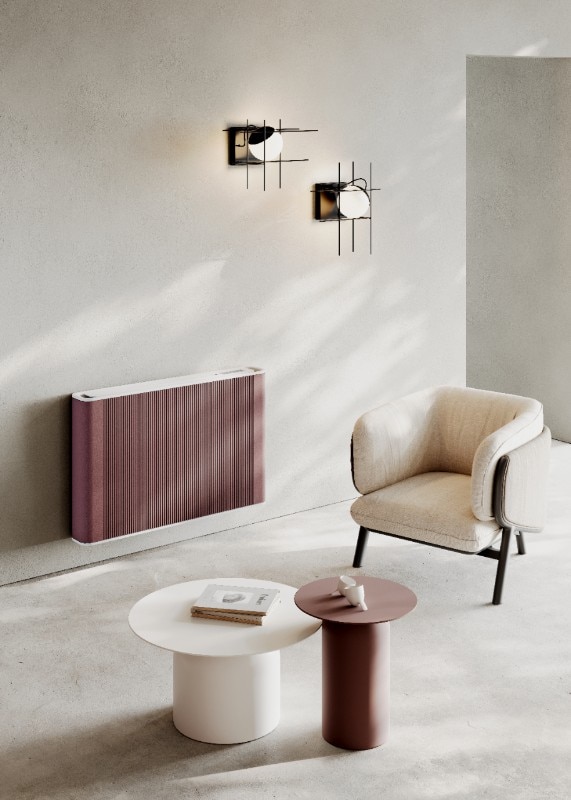This article was originally published on Domus 1073, November 2022.
The suburbs of Molina de Segura sprawl across the arid, landslide-prone hills of Murcia. Here, Andrés Jaque and his Office for Political Innovation have designed a detached house that, while replicating the principle of the isolated building on an individual lot, serves as a powerful manifesto against wasteful land use. The Rambla Climate-House is raised on stilts above the rugged edge of a gully, a place of maximum fertility and biological wealth, usually sacrificed to the needs of rapid and standardised urban growth. Its airy volume surrounds and protects the void in its oval plan, an enclosed space intended to recreate a fragment of the ecosystem.
Conceived by its designers as “a climate-friendly ecological device”, the house collects rainwater as well as its grey water, with humidity and conductivity sensors automatically regulating the water’s distribution in the ground. The irregularly shaped pavilion is itself “eroded” like the gully. With various forms of aesthetic mastery, it combines the contemporary minimalism of pastel colours, resin floors and the refined marble ring-shaped continuous balcony; the environmentalist and counter-cultural low-tech of sheet metal and exposed structures; and the radical allusions of portholes and bulging windows.
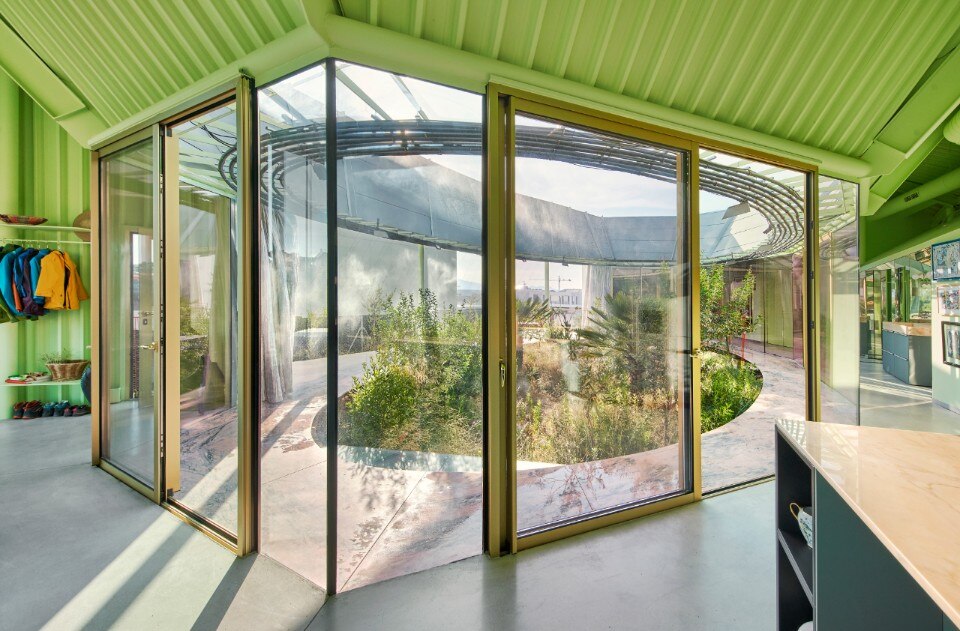
A case study house for our time, the Rambla Climate-House recalls its famous Los Angeles antecedents with its experimental character, tight budget and the ambition to serve as a precedent and a frame of reference. Regular gatherings and visits are organised with communities and the local authorities. Finally, as an allusive madeleine, not a direct quotation, it evokes the panoramic relationship between the transparent intimacy of the domestic interior and the barren surroundings of a Lautner or Ellwood.
But an essential difference distances those modernist houses from this contemporary home. In those cases, the land was a level support offering scope for structural virtuosity, and the landscape was the distant urban skyline faced by the building-artwork. Here, by contrast, architecture becomes a kind of infrastructure to support the biodiversity of the land it rests on, enabling a small, Edenic landscape of proximity to flourish within it.
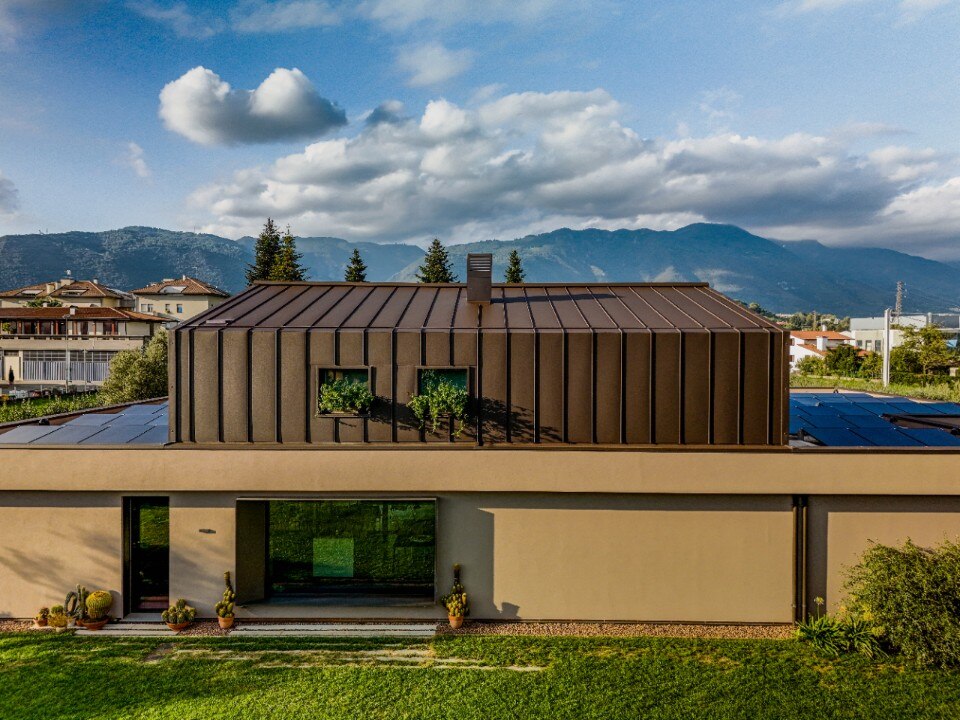
A house turns its back on the road to open up to the landscape
The single-family house project designed by Elena Gianesini engages in a dialogue with the Vicenza landscape, combining tranquility and contemporary style through essential geometries and the Mazzonetto metal roofing.


